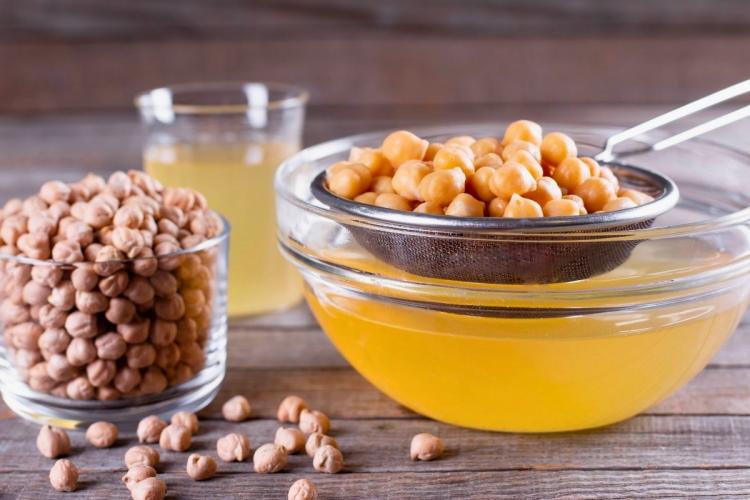Aquafaba
Aquafaba is a versatile and exciting ingredient that has opened new possibilities for vegan cooking and baking.
Aquafaba has become a popular ingredient in vegan cooking and baking in recent years. It is a versatile ingredient that can be used as a substitute for egg whites, and it has a similar texture and consistency. In this article, we will explore what aquafaba is, its nutritional value, and some recipes that you can try at home.
What is aquafaba?
Aquafaba is the liquid that is left behind when you drain a can of chickpeas. This liquid has a unique combination of proteins, starches, and other soluble plant solids that give it its unique properties. The name "aquafaba" comes from the Latin words for water (aqua) and bean (faba).
Aquafaba can be used as a vegan substitute for egg whites in a variety of recipes, including meringues, mousses, cakes, and cookies. It can also be used as a binder in recipes that call for eggs, such as veggie burgers and meatballs.
Nutritional value of aquafaba
Aquafaba is low in calories and fat, and it is rich in protein, fiber, and other nutrients. One tablespoon of aquafaba contains only about 3-5 calories, and it contains less than 1 gram of fat. It is also a good source of plant-based protein, with about 1 gram of protein per tablespoon. Additionally, aquafaba is a good source of fiber, with about 1 gram of fiber per tablespoon.
Tips to use aquafaba
Aquafaba can be used as a vegan substitute. To use it, you simply drain the liquid from a can of chickpeas and whisk it with an electric mixer or stand mixer until it forms stiff peaks, just like egg whites. You can then use it in place of egg whites in your recipe.
- Use the liquid from a can of unsalted chickpeas, as salt can affect the flavor and stability of the aquafaba.
- Make sure your mixer and bowl are clean and free from any oil or grease, as this can prevent the aquafaba from whipping up properly.
- Whip the aquafaba until it forms stiff peaks, which means it holds its shape when you lift the whisk out of the bowl.
- Aquafaba can be stored in the refrigerator or freezer until you're ready to use it.
In conclusion, aquafaba is a versatile and easy-to-use ingredient that can be used as a substitute for egg whites in a variety of recipes. Plus, it's low in calories and fat, and it's a good source of protein and fiber. It's a great option for people who have egg allergies, dietary restrictions, or ethical concerns about using animal products. Additionally, using aquafaba is a great way to reduce food waste, as it uses an ingredient that is often discarded.
If using the aquafaba from a can of chickpeas, select a no sodium or low sodium brand. The salt from the liquid can affect the flavor when cooking desserts.
You can use the liquid from cooking chickpeas at home. You need to strain it very well. Use it at room temperature.
The liquid from cooking any type of white beans can also be used as aquafaba.
3 tablespoons aquafaba = 1 egg
2 tablespoons aquafaba = 1 egg white
You can whisk aquafaba with a globe whisk, a stand mixer, a handheld mixer or a kitchen robot.
Leftover aquafaba will keep in the fridge 2-3 days.
Recipes with aquafaba
So next time you open a can of chickpeas, don't throw away the liquid – use it to make aquafaba and explore the possibilities of this exciting ingredient.

